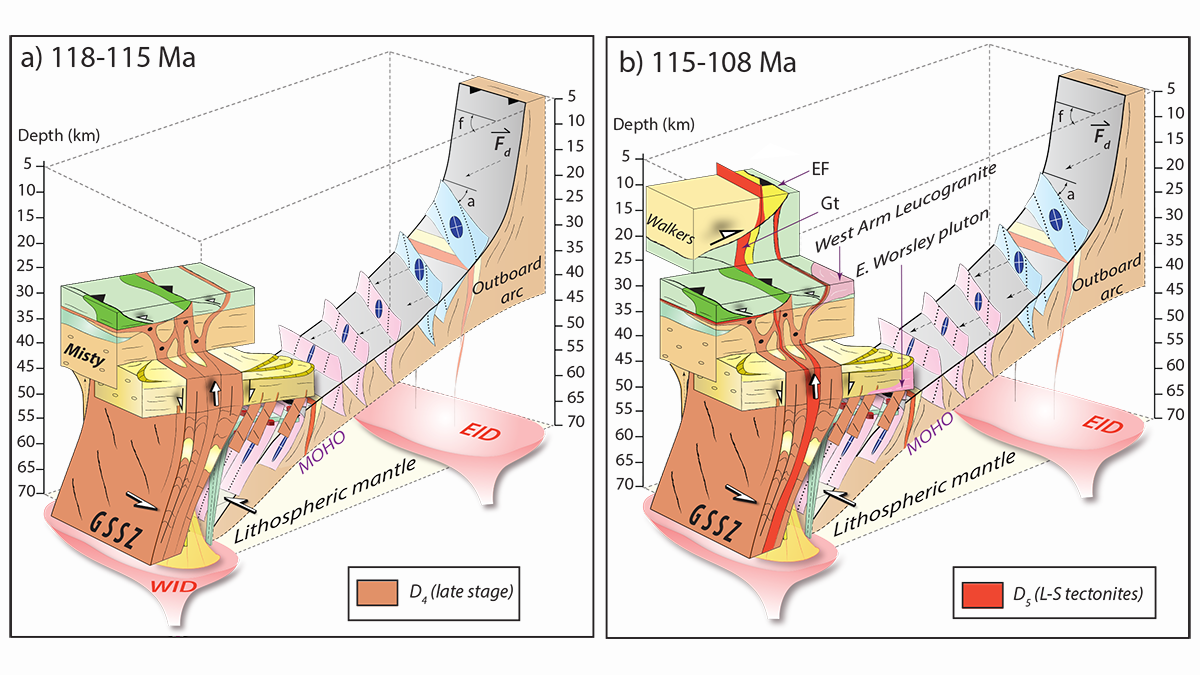Editors’ Highlights are summaries of recent papers by AGU’s journal editors.
Source: Tectonics
Reconstructing how large faults develop and evolve at all depths in the lithosphere is important for assessing earthquake hazards and the distribution of natural resources. Critical unknowns in fault zone evolution include how surface deformation, frictional processes in the brittle crust, and ductile behavior in deep shear zones are linked, and how the distribution of magmatism and fluids govern these connections.
Klepeis et al. [2022] synthesize new field observations, structural analyses, and geochronology with decades of their prior work from two lithospheric-scale, transpressional shear zones in New Zealand. These shear zones developed in an exhumed continental magmatic arc during Cretaceous subduction. The Median Batholith is the Earth’s largest and deepest known exposure of a Cordilleran-style magmatic arc system that hosts two shear zones. Spectacular rock outcrops at the Earth’s surface allowed the researchers to trace these shear zones from the upper to lower crust through the batholith.
Both the Grebe-Indecision Creek and George Sound shear zones reactivated inherited crustal boundaries. However, the authors show that the subsequent evolution of these systems is linked to the presence or absence of magmatism. The Grebe-Indecision Creek shear zone was magma-starved, nucleated in the middle crust, and propagated downward. The magma-rich George Sound shear zone initiated in the lower crust and grew upwards into the middle crust in a few million years (see figure). Integrated data demonstrate that as plutons interacting with the George Sound shear zone solidified in the lower crust, deformation was transferred to the middle crust where it widened and a fold and thrust belt developed in the upper crust.
In this study, the authors seamlessly blend big data science with careful, detailed observations and interpretations to reveal, in unprecedented detail, the spatiotemporal distribution of deformation, strain localization, and reactivation in each shear zone and the role that magmatism played as these faults grew into different crustal depths. The results highlight the role that magma-deformation interactions play in shear zone evolution by modulating heat, fluids, and thus rheology of the crust.
Citation: Klepeis, K. A., Schwartz, J. J., Miranda, E., Lindquist, P., Jongens, R., Turnbull, R., & Stowell, H. (2022). The initiation and growth of transpressional shear zones through continental arc lithosphere, southwest New Zealand. Tectonics, 41, e2021TC007097. https://doi.org/10.1029/2021TC007097
—Alexis Ault, Associate Editor, Tectonics

